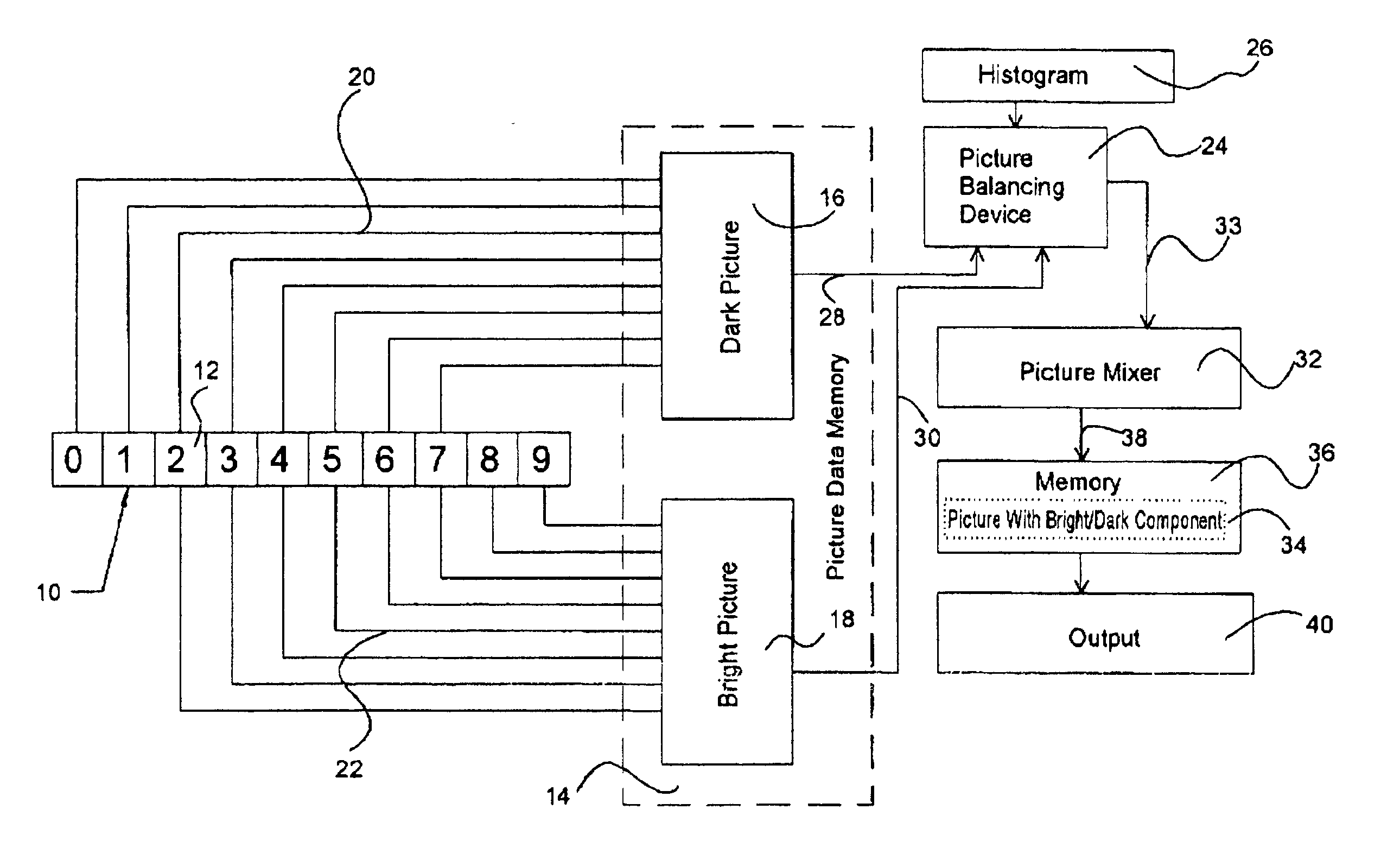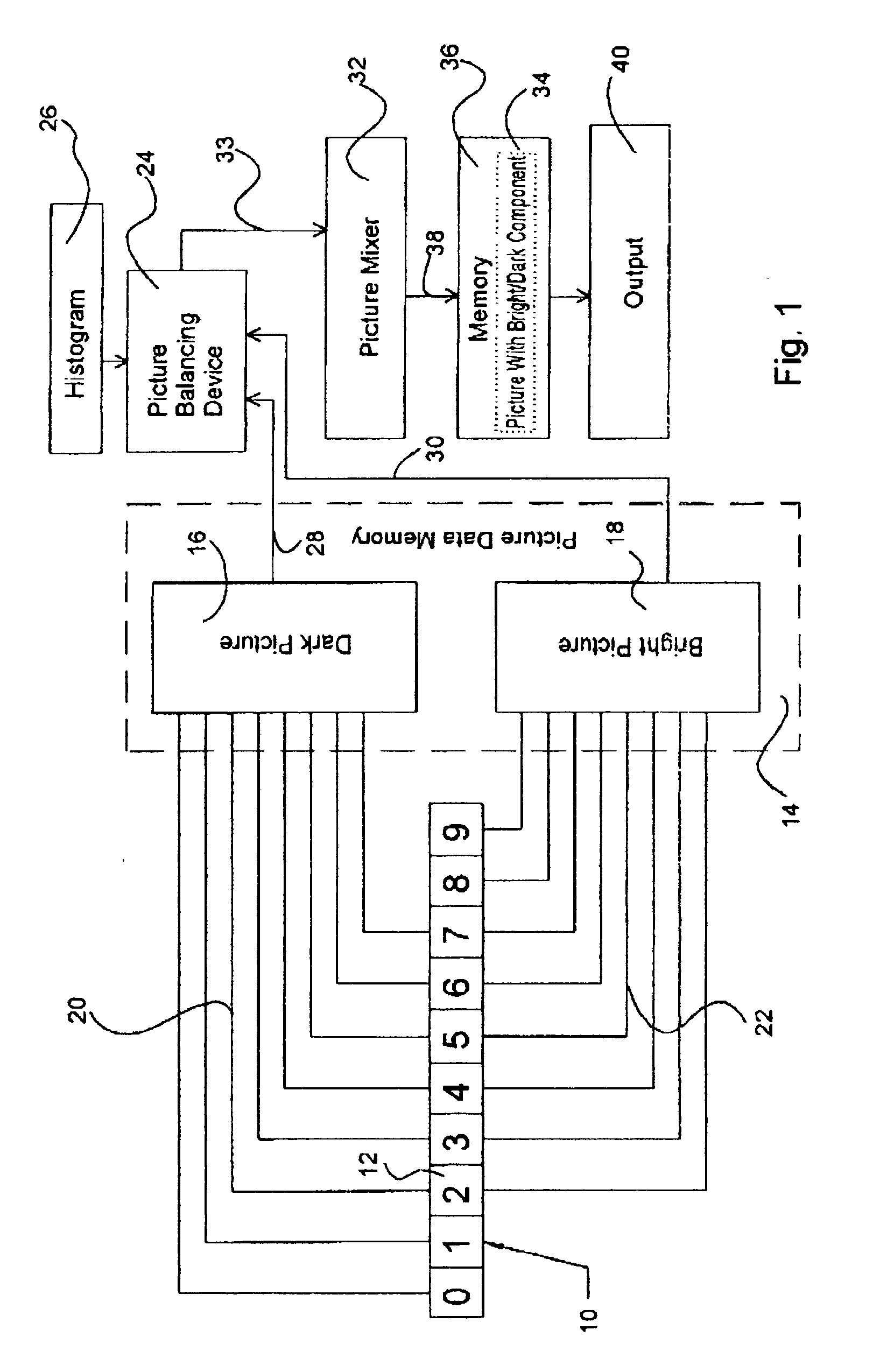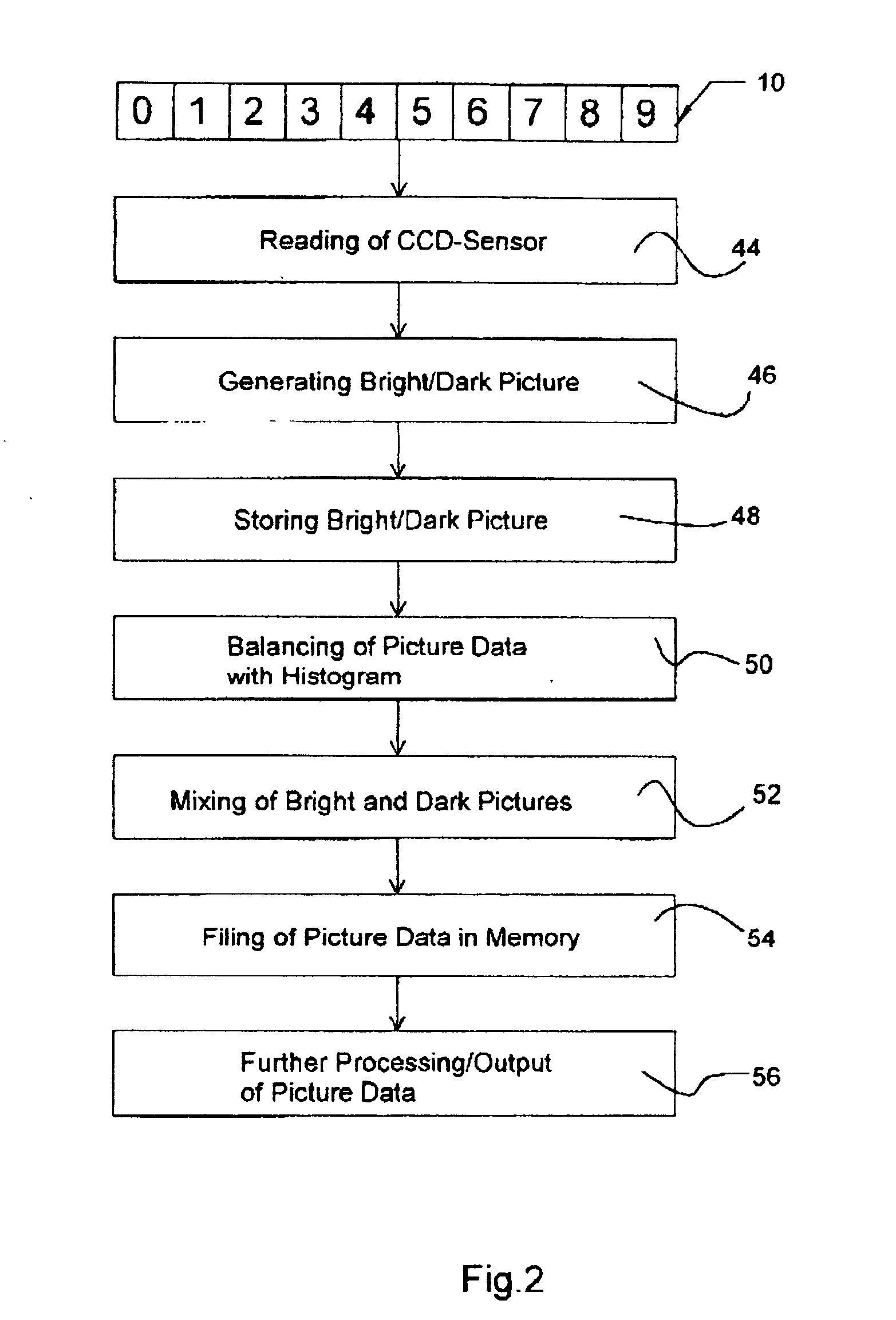Image detecting system
a detection system and image technology, applied in the field of image detection systems, can solve the problems of insufficient 256 gray values which can be displayed with such a system to make full use of the full dynamic range of ccd sensors, inability to achieve the presently available image detection systems, and portions of pictures are too brigh
- Summary
- Abstract
- Description
- Claims
- Application Information
AI Technical Summary
Benefits of technology
Problems solved by technology
Method used
Image
Examples
Embodiment Construction
[0015] FIG. 1 is a schematic illustration in the form of a block diagram of an image detecting system for detecting and evaluating an image by means of a digital camera. Preferably, such image detecting system is used in a traffic monitoring installation for watching traffic. Referring to FIG. 1, numeral 10 designates a CCD detector. The CCD detector is a picture detector as used in digital cameras. In the present case, the CCD detector 10 has a dynamic range of 10 bit. This is illustrated by ten fields 12. Of course, also CCD sensors having a larger dynamic range can be used, and the invention is not limited to this embodiment.
[0016] The least significant bit of the CCD sensor, the field 12 labeled "0", represents the darkest picture component. The most significant bit, the field 12 labeled "9", represents the brightest picture component The intermediate bits of the CCD sensor represent increasingly bright picture components.
[0017] The picture data read out of the CCD sensor 10 are...
PUM
 Login to View More
Login to View More Abstract
Description
Claims
Application Information
 Login to View More
Login to View More - R&D
- Intellectual Property
- Life Sciences
- Materials
- Tech Scout
- Unparalleled Data Quality
- Higher Quality Content
- 60% Fewer Hallucinations
Browse by: Latest US Patents, China's latest patents, Technical Efficacy Thesaurus, Application Domain, Technology Topic, Popular Technical Reports.
© 2025 PatSnap. All rights reserved.Legal|Privacy policy|Modern Slavery Act Transparency Statement|Sitemap|About US| Contact US: help@patsnap.com



